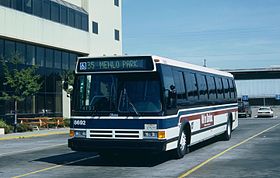
The Grumman Aircraft Engineering Corporation, later Grumman Aerospace Corporation, was a 20th century American producer of military and civilian aircraft. Founded on December 6, 1929, by Leroy Grumman and his business partners, it merged in 1994 with Northrop Corporation to form Northrop Grumman.

The New York City Transit Authority is a public-benefit corporation in the U.S. state of New York that operates public transportation in New York City. Part of the Metropolitan Transportation Authority, the busiest and largest transit system in North America, the NYCTA has a daily ridership of 8 million trips.
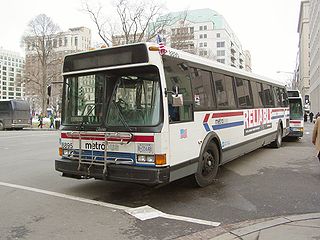
The Flxible Co. was an American manufacturer of motorcycle sidecars, funeral cars, ambulances, intercity coaches and transit buses, based in the U.S. state of Ohio. It was founded in 1913 and closed in 1996. The company's production transitioned from highway coaches and other products to transit buses over the period 1953–1970, and during the years that followed, Flxible was one of the largest transit-bus manufacturers in North America.

Twin Coach was an American vehicle manufacturing company from 1927 to 1955, located in Kent, Ohio, and a maker of marine engines and airplane parts until the 1960s. It was formed by brothers Frank and William Fageol when they left the Fageol Motor Company in 1927. They established the company in Kent to manufacture and sell buses with a new concept design. The body structure of this new bus was unique in that the body also became the frame and two engines – "twin" engines – were used to allow for larger passenger loads. This concept was patented by William B. Fageol.
The Yellow Coach Manufacturing Company was an early manufacturer of passenger buses in the United States. Between 1923 and 1943, Yellow Coach built transit buses, electric-powered trolley buses, and parlor coaches.
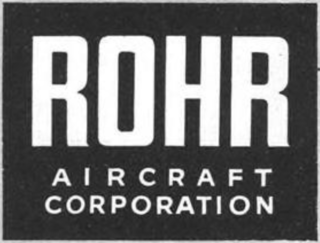
Rohr, Inc. is an aerospace manufacturing company based in Chula Vista, California, south of San Diego. It is a wholly owned unit of the Collins Aerospace division of Raytheon Technologies; it was founded in 1940 by Frederick H. Rohr as Rohr Aircraft.
NJ Transit Bus Operations' and companies leasing buses from NJ Transit use various models of buses between 25 and 60 feet in length to provide service within the state of New Jersey. The lists and rosters below list current and past buses purchased new or inherited by NJ Transit for heavy duty fixed-route service.

The GM New Look bus is a municipal transit bus that was introduced in 1959 by the Truck and Coach Division of General Motors to replace the company's previous coach, retroactively known as the GM "old-look" transit bus.

The Rapid Transit Series (RTS) city bus is a long-running series of transit buses that was originally manufactured by GMC Truck and Coach Division during 1977, in Pontiac, Michigan. First produced in 1977, the RTS was GMC's offering of an Advanced Design Bus design and is the descendant of GMC's prototype for the U.S. Department of Transportation's Transbus project. The RTS is notable for its then-futuristic styling featuring automobile-like curved body and window panels; the Advanced Design Buses were meant to be an interim solution between the high-floor transit buses that preceded them, such as the GMC New Look, and modern low-floor buses that would facilitate passenger boarding and accessibility. Most current buses are now made by specialized coach manufacturers with flat sides and windows.

The Orion V was a line of rigid high-floor transit buses available in 32', 35', and 40' lengths manufactured by Ontario Bus Industries between 1989 and 2009. The conventionally powered buses, either with longitudinally mounted diesel or natural gas engines, used a T-drive transmission coupling. The Orion V replaced the Orion I, and was in turn replaced by the low-floor Orion VI and Orion VII.
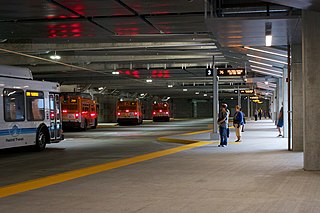
The Los Angeles County Metropolitan Transportation Authority operates a vast fleet of buses for its Metro Bus and Metro Busway services. As of September 2019, Metro has the third largest bus fleet in North America with 2,320 buses.

The GM "old-look" transit bus was a transit bus that was introduced in 1940 by Yellow Coach beginning with the production of the model TG-3201 bus. Yellow Coach was an early bus builder that was partially owned by General Motors (GM) before being purchased outright in 1943 and folded into the GM Truck Division to form the GM Truck & Coach Division. The Yellow Coach badge gave way to the GM nameplate in 1944. Production of most "old-look" models was stopped upon the release of the GM New-Look bus in 1959, however some smaller "old-look" models continued to be built until 1969. Approximately 38,000 "old-look" buses were built during the 29-year production run. The "old-look" name is an unofficial retronym applied to this series of GM buses after the release of the GM New-Look series.

The Gillig Phantom is a series of buses that was produced by an American manufacturer Gillig Corporation in Hayward, California. The successor to the long-running Gillig Transit Coach model line, the Phantom marked the transition of Gillig from a producer of yellow school buses to that of transit buses. The first transit bus assembled entirely by Gillig, the Phantom was produced exclusively as a high-floor bus.

The Flxible New Look bus was a very popular transit bus introduced in 1959 by The Flxible Company, and produced from 1960 until 1978, when the New Look was replaced by the "870" Advanced Design Bus. Over its 17-year production run 13,121 Flxible New Look buses were manufactured.
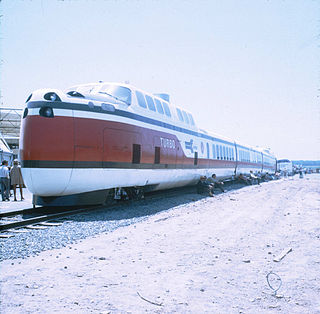
U.S. International Transportation Exposition, better known as Transpo '72, was a trade show held on 300 acres (1.2 km2) of land at Dulles International Airport outside Washington, D.C., for nine days from May 27 to June 4, 1972. The $10 million event, sponsored by the U.S. Department of Transportation, was a showcase for all sorts of transportation-related technologies. Over a million visitors flocked to the show from all over the world. According to the Wall Street Journal, it was "the biggest show the government has put on since World War II."
Las Vegas Transit, also known as Las Vegas Transit System (LVTS), was a former operator of a small private bus system in Las Vegas, Nevada, United States.

The Flyer 700/800/900 series were a series of transit buses built in three generations by Western Flyer and its successors Flyer Industries and New Flyer, of Canada, between 1967 and 1987. Except for brief overlap during transition from one generation to the next, they were not in production concurrently. All individual model designations included a prefix of either D, for diesel propulsion, or E, for electrically powered trolleybuses, with the first digit indicating the generation and the last digit indicating a variant within the generation. The introductory model was the D700, originally released in 1967 for the Canadian transit market, and the last series group to be produced, D900, was discontinued in 1987. Flyer had become New Flyer only the year before, in 1986.

The NABI SFW was a line of standard (high)-floor transit buses available in 40' rigid and 60' articulated nominal lengths, manufactured by the Ikarus USA joint venture, then by American Ikarus and North American Bus Industries (NABI) between 1989 and 2013. In addition to the different lengths, the buses were sold with a variety of prime movers, including conventional diesel and CNG combustion engines and hybrid diesel-electric power.

The NABI CompoBus was a line of low-floor composite-bodied transit buses available in 40' and 45' rigid lengths manufactured by North American Bus Industries (NABI) between 2002 and 2013. In addition to the different available lengths, the buses were sold with a variety of prime movers, ranging from conventional diesel and LNG/CNG combustion engines to diesel-electric hybrid.
Transbus was announced in December 1970 as a United States Urban Mass Transportation Administration (UMTA) program to develop improvements to existing transit bus design; at the time, the US bus market was dominated by the GM New Look and Flxible New Look buses, and bus ridership was declining. The improvements had been suggested earlier by the National Academy of Sciences in 1968 to improve operating costs, reduce pollution, and stimulate ridership, and included innovations such as a low floor for easier entry and seats cantilevered from the wall to expand passenger space.
